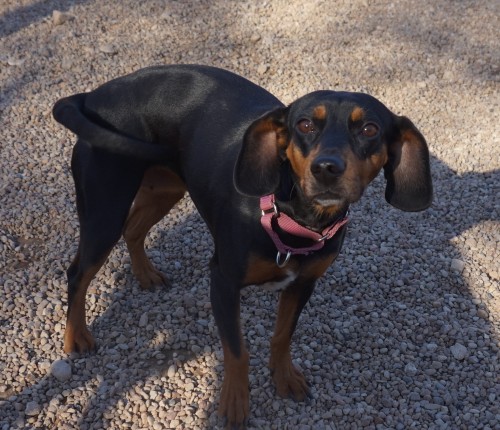
You wake up in the middle of a large, unfamiliar room. In one corner of the room, a massive gorilla is napping. You pin yourself to the opposite corner – as far away from the gorilla as possible. You scan the room for a way out. There is none.
The gorilla wakes up. You notice it’s very male. He goes about his morning routine – mainly he eats bananas. He pays no attention to you. It’s like you’re not even there. You’re relieved, but no less certain that it’s just a matter of time before you’re mince meat.
Hours pass. The gorilla still hasn’t looked at you. You feel pangs of hunger.
Suddenly, without looking over, the gorilla tosses a banana. It lands a few steps away from you.
After building up the courage, you hold your breath and gingerly tiptoe over to the banana, eyes wide and locked onto the massive ape. You quickly snatch the banana and bolt back to your corner.
It’s several minutes before you are able to catch your breath and gobble up the spoils of your effort.
Days pass, bananas are tossed and eaten, and the longer the big ape goes ignoring you, the safer you feel. You suspect he might just be trying to fatten you up, but so far, so good.
Weeks pass. The gorilla still has paid you no mind, other than serving as your personal banana dispenser. You feel quite secure in your little corner.
One day, as you cautiously approach a banana that landed a bit closer to the gorilla than normal, he finally turns and faces you for the first time.
All you see is hairy muscle and big white teeth. You panic and flee back to your corner where you remain, shaking with fear, for several hours. You knew you couldn’t trust that damn gorilla – he clearly was setting a trap the whole time.
You won’t get fooled again.
The truth is that the gorilla has no ill intentions. He knows you are scared but doesn’t completely understand why – he just wants to be your friend.
He wisely figured that given time, you’d start to become less afraid.
But he made a mistake and moved too fast. You weren’t ready for his wave and toothy ape smile.
He had gained a certain level of trust, but not enough. If you truly trusted him, you would happily jump right into his hairy lap. But you are a long way from that. You still think he might rip you to shreds.
But before ripping you to shreds he would need to look at you. And now he had taken that dreaded first step.
The trust the gorilla had spent weeks building with you instantly eroded the moment he made the mistake of turning towards you too soon.
Now he’d have to put time and effort into just getting your trust back up to the level it was before his mistake.
And if he continued to make similar mistakes before you truly trusted him, he’d never gain you as a friend. And that would be tragic :(.
You are a gorilla.
When faced with a fearful dog, your objective needs to be to gain her trust.
When you literally have to push a dog off your lap, that is a good (though not foolproof) sign that she might trust you.
Violating that trust before you reach that point will usually set you back.
Just like the gorilla, you might think that it’s absurd for the dog to be fearful.
You do everything you can to show her you are no danger – look at her and smile, talk sweetly, reach your hand out to give treats. You do everything except ignore her. No reason for her to be scared right? You just want to show love.
Except from the dog’s perspective, a scary person three times her size is completely fixated on coaxing her near them. All she wants is for you to give her some time.
Maybe toss some cheese over in her general direction (without looking at her!). If you make a mistake or two, and you will, it’s not the end of the world.
But each mistake is a step back.
And if you keep making mistakes, you will never gain the dog’s full trust.
You’ll know when she trusts you. There will be no question.
Below is video of me working with a fearful dog named Elvis. In this case, it only took about 45 minutes to gain trust. But it could take much longer, depending on the dog. The important thing to realize is that it’s completely up to the dog to make the decision that you are safe. You can’t force it. All you can do is give evidence.
Share this Post